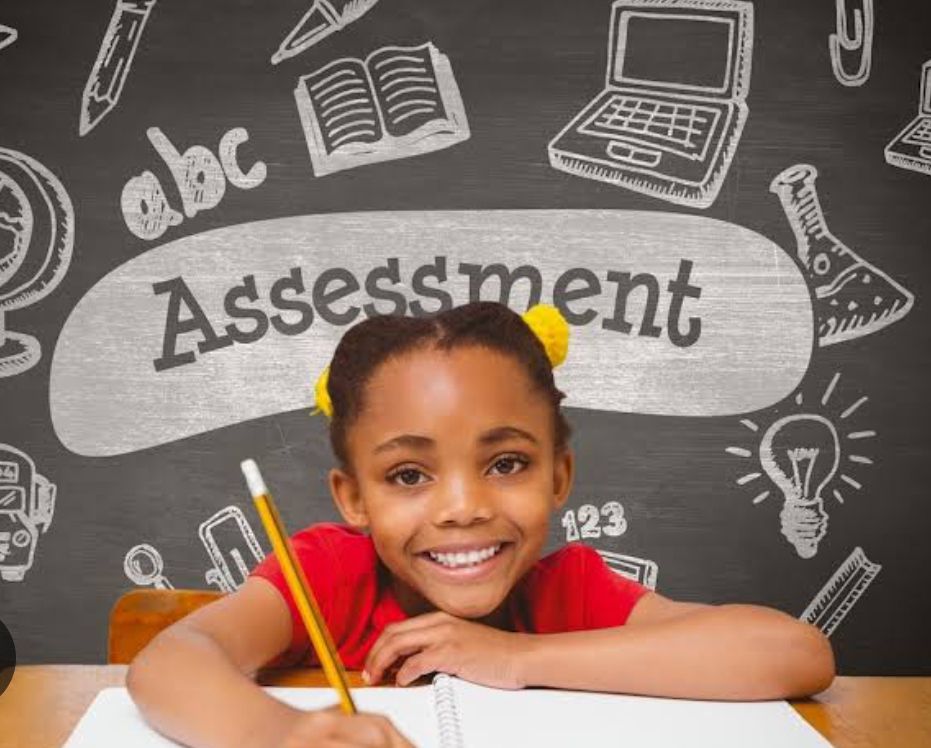
Feeling like assessments are a constant source of stress and confusion? You’re not alone! This post tackles ten frequently asked questions about assessments, offering clear explanations, practical tips, and venturing beyond simple yes-or-no answers. Let’s delve deeper into these questions and explore how we can make assessments a valuable tool for both educators and students.
Question: Isn’t Traditional Testing the Best Way to Measure Student Learning?
While traditional tests like multiple-choice quizzes can provide a quick snapshot of factual knowledge, a comprehensive assessment strategy is essential for a more complete picture. This means going beyond the bubble sheet and incorporating a variety of methods to assess different skills and learning styles.
Here’s why a well-rounded approach is beneficial:
Deeper Understanding: Projects, presentations, and portfolios allow students to demonstrate their understanding in a more creative and comprehensive way. They can showcase their research skills, analytical abilities, and communication effectiveness, providing a richer picture of their learning journey.
Catering to Diverse Learners: Not all students excel at standardized tests. A variety of assessment formats allows students with different learning styles to shine. Kinesthetic learners might excel in presentations or creating models, while auditory learners might benefit from creating podcasts or video explanations.
Meaningful Feedback: Traditional tests often offer limited feedback. Formative assessments, like projects and self-assessments, allow for ongoing feedback and opportunities for improvement.
Question: How Can I Effectively Assess Students in a Remote Learning Environment?
Remote learning strategies present unique challenges for assessment. However, several educational technology trends can be your allies:
Online Quizzes with Security Features: Utilize online quiz platforms that offer question banks with automatic shuffling to prevent cheating. These platforms can also provide immediate feedback for students, allowing them to gauge their understanding.
Virtual Classroom Tools for Presentations and Feedback: Virtual classroom tools like breakout rooms and screen sharing can facilitate online presentations and live feedback sessions. Students can showcase their projects and receive immediate feedback from educators and peers.
Digital Portfolios for Showcasing Work: Encourage students to create digital portfolios using online presentation tools or cloud storage platforms. These portfolios can be a comprehensive collection of their work throughout a course, showcasing their progress and development over time.
Question: What Are Some Strategies for Promoting Self-Assessment in Students?
Self-assessment is a crucial skill for lifelong learning. It empowers students to take ownership of their learning journey and develop a critical eye for their progress. Here are some ways to promote self-assessment:
Rubrics and Checklists: Provide students with clear rubrics or checklists that outline learning objectives and success criteria. These tools can guide students in evaluating their own work, identifying areas of strength and areas needing improvement.
Exit Tickets and Online Surveys: Use short exit tickets or online surveys at the end of lessons or units. These can be anonymous and ask students to reflect on their understanding of the material, what they found challenging, and what they learned effectively.
Reflective Journaling: Encourage students to maintain reflective journals where they can document their learning experiences, challenges, and successes. This self-reflection fosters deeper understanding and helps students identify areas for growth.
Question: How Can I Make Assessments Less Stressful for Students?
Assessment anxiety is a real concern for many students. Here are some tips to create a more positive and stress-free assessment environment:
Clear Communication is Key: Ensure students understand the purpose of assessments, learning objectives, and grading criteria. Transparency reduces uncertainty and allows students to feel more prepared.
Variety is the Spice of Learning: Offer a variety of assessment formats to cater to different learning styles and preferences. This allows students to showcase their knowledge and skills in a way that feels comfortable for them.
Practice Makes Perfect: Provide opportunities for practice and revision before summative assessments. Offer practice quizzes, class discussions, and peer review sessions to help students solidify their understanding and build confidence.
Focus on Progress Over Perfection: Remember, the primary goal of assessment is to measure learning and identify areas for improvement. Focus on providing constructive feedback and celebrating student progress, fostering a growth mindset.
These strategies create a supportive learning environment where students feel empowered to take risks, learn from mistakes, and approach assessments with a sense of growth and curiosity.
Question: How Can I Use Technology to Differentiate Assessments for Students with Diverse Needs?
Technology can be a powerful tool for creating differentiated assessments. Here’s how:
Accessibility Features: Many online platforms offer built-in features like text-to-speech options, adjustable font sizes, and alternative response formats. These features cater to students with visual impairments, auditory processing difficulties, or motor skill challenges.
Catering to Learning Styles: Explore the potential of various tools to match different learning styles. For auditory learners, consider using audiobooks or narrated presentations. Kinesthetic learners might benefit from creating models or using screen recording tools to demonstrate their understanding.
Online Tutoring Services for Additional Support: For students who need additional support, online tutoring services can provide personalized instruction and targeted practice opportunities to bridge any learning gaps before assessments.
Question: What Are Some Effective Ways to Assess Student Collaboration Skills?
Collaboration is an essential skill for success in the 21st century workplace. Here are some ways to assess how well students work together:
Observation and Rubrics: Pay close attention to group dynamics during projects and discussions. Develop rubrics that evaluate collaboration skills like communication, conflict resolution, task management, and active listening. These rubrics can be used to provide specific feedback to students on their teamwork abilities.
Peer and Self-Assessment: Consider incorporating peer evaluations or self-assessments where students reflect on their own teamwork contributions and how they collaborated with their peers. This self-reflection fosters accountability and helps students identify areas for improvement in their collaborative skills.
Question: How Can I Create Assessments that Assess Critical Thinking Skills?
Critical thinking goes beyond rote memorization. Here’s how to design assessments that encourage students to think critically:
Move Beyond Recall: Ditch simple recall questions that ask students to regurgitate facts. Instead, create questions that require analysis, evaluation, and synthesis of information.
Real-World Scenarios: Present students with real-world scenarios and ask them to propose solutions, justifying their choices with evidence. This encourages them to think critically about problems and develop well-supported arguments.
Open-Ended Questions: Utilize open-ended questions that require students to explain their reasoning and thought processes. This allows you to assess their ability to analyze information, draw conclusions, and support their claims with evidence.
Question: How Can I Incorporate Formative Assessment into My Teaching Practice?
Formative assessment is an ongoing process that provides valuable insights into student learning throughout a unit, not just at the end. Here are some strategies to integrate formative assessment:
Exit Tickets and Quick Quizzes: Use short exit tickets or online quizzes at the end of lessons or activities. These quick checks for understanding allow you to identify any learning gaps early on and adjust your teaching strategies accordingly.
Short Writing Prompts: Pose open-ended writing prompts that encourage students to reflect on key concepts and demonstrate their understanding. These prompts can be used as formative assessments to gauge student learning and identify areas needing further explanation.
Interactive Whiteboards and Online Polls: Utilize interactive whiteboards or online polling tools to gather real-time feedback from students. This allows you to see how well students are grasping the material and adjust your instruction based on their responses.
By incorporating formative assessment throughout a unit, you can create a more dynamic learning environment where instruction adapts to student needs, leading to deeper understanding and improved learning outcomes.
Question: Is There a Role for Standardized Testing in Modern Education?
Standardized tests can provide a standardized snapshot of student performance on a specific set of skills. They can be helpful for identifying broad trends and achievement gaps across different schools or regions. However, they shouldn’t be the sole measure of student success.
Here’s why over-reliance on standardized testing can be problematic:
Limited Scope: Standardized tests often focus on a narrow range of skills, neglecting creativity, critical thinking, and problem-solving abilities.
Teaching to the Test: Focusing solely on standardized testing can lead to a curriculum that prioritizes test prep over genuine learning and exploration. This can stifle curiosity and innovation.
Student Stress and Anxiety: High-stakes standardized tests can create undue stress and anxiety for students, hindering their performance and overall learning experience.
Question: I’m Feeling Overwhelmed by Different Assessment Strategies. Where Can I Find Resources?
There’s a wealth of information available to support educators in assessment practices! Here are some starting points:
Educational Websites and Blogs: Explore websites and blogs dedicated to education, curriculum development, and assessment. Many of these resources offer practical tips, downloadable templates, and insightful articles on various assessment strategies.
E-learning Platforms Comparison Websites: Utilize e-learning platforms comparison websites to find online resources and tools specifically designed for assessment. These platforms might offer features like question banks, rubrics creation tools, and online grading functionalities.
Self-paced Online Courses on Assessment Design: Consider enrolling in self-paced online courses on assessment design. These courses can provide in-depth exploration of different assessment methods, best practices for creating effective assessments, and strategies for using technology to enhance the assessment process.
Remember, the key to effective assessment is to choose strategies that align with your learning objectives and cater to the diverse needs of your students. Don’t be afraid to experiment and find what works best for your classroom!
Do you have any other questions about assessment? Share them in the comments below, and let’s keep the conversation going!
By utilizing a variety of assessment methods, focusing on progress over perfection, and fostering a growth mindset in students, we can create a positive learning environment where assessment becomes a valuable tool for both educators and students, guiding learning and celebrating achievement.










